The Original Restoration Magazine for people who are passionate about old houses to repair, rehabilitate, update, and decorate their homes; covering all classic American architectural styles,—from the earliest Colonial-era buildings to grand Victorians of every variety to Arts & Crafts bungalows and mid-century ranches.
Re-invigorating the House
SIDE NOTES
Old House Journal • VOLUME LII, ISSUE 2
Hardware for Kitchens • Upgrading the functional jewelry is an easy and effective way to improve any kitchen.
Surfacing • Treatments neoclassical to rustic, for walls and ceilings.
Over-the-top Victorian • The Queen Anne style lends itself to exuberant architectural interpretations.
MID-CENTURY ENHANCED • Delaying their long-anticipated remodeling for years meant that this design-savvy family had time to embrace the best aspects of the era.
DESIGN
tracing the kitchen island DESIGN CUES + ALTERNATIVE IDEAS • The island is both the workhorse and the design centerpiece of today’s kitchens. The idea can be tricky to incorporate in an old house as islands have grown in function and size.
A Nostalgic Look at a Workable Kitchen • This quintessential late-1950s design comes from the Sears Kitchen Book of 1958.
VICTORIAN FLOOR TILE
Addressing an Outdated Family Bath • The primary upstairs bath was cramped and lacked storage. A new layout fit this Tudor.
RESTORE
Building our kitchen was a labor of LOVE • From how to repair the old plaster to selecting cabinets and appliances, kitchen renovation in an old house seems to require a million and one decisions, each one critical. Since we were starting almost from scratch, we wanted to design a kitchen that works for us, with space to prep, cook, and serve meals and drinks, talk with friends, feed our pets, and enjoy daily life. After mulling it over for years, we completed a hands-on renovation in 13 months—transforming an awkward, hard-to-use space into a kitchen that’s the hub of the house.
build-it-yourself Cabinets
PREPWORK
FIXING AN OLD mistake
… and plaster repair
configuring a sink
I ♥ TEAMWORK
Working on Walls • Assorted items to make surface work smooth and easy.
The Past Resurfaces • Historic frieze and ceiling papers emerge underneath layers of wall coverings and years of water damage.
A Conversation Piece • Two unremarkable vintage pieces become one unique side table.
Cutting Non-90° Angles
INSPIRE
COMMITTED to the Villa • A couple restores authenticity and glamour to a mid-19th-century Italianate house, filling it with antiques and gasoliers, but also a family-friendly new kitchen.
IN AN ENGLISH BASEMENT KITCHEN • In the spirit of an English country manor, I recently added a kitchen in the basement of my Victorian house in Seattle. The English Victorians had it right: The basement is indeed a good place for the kitchen. Often there’s plenty of room for kitchen duties and extra storage; cooking activity and smells are kept out of the way. Urban row houses from New York to Chicago also placed the kitchen in the so-called English basement, a “garden level” space with some natural light, as is the case at my house.
BUILDING IN THE BASEMENT • A DRY BASEMENT IS IMPORTANT WHETHER YOU FINISH IT OR NOT.
a trio of baths DESIGNED FOR A 1926 TUDOR • The Tudor Revival house, built in 1926, sits high on the western slope of Seattle’s Queen Anne Hill. The homeowners immediately fell for its sweeping views of Puget Sound and the Olympic Mountains beyond. The house itself had plenty of charm: coved ceilings, arched doorways, leaded-glass windows, a gracefully curving center staircase. Significant updating had to be done on the plumbing and...

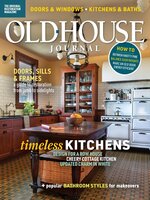 March/April 2025
March/April 2025
 January/February 2025
January/February 2025
 New Old House 2025
New Old House 2025
 November/December 2024
November/December 2024
 Arts & Crafts Homes 2025
Arts & Crafts Homes 2025
 September/October 2024
September/October 2024
 July/August 2024
July/August 2024
 Renovation Lookbook 2024
Renovation Lookbook 2024
 May/June 2024
May/June 2024
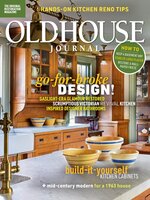 March/April 2024
March/April 2024
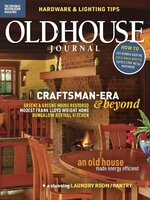 January/February 2024
January/February 2024
 New Old House 2024
New Old House 2024
 November/December 2023
November/December 2023
 September/October 2023
September/October 2023
 July/August 2023
July/August 2023
 Renovation Lookbook 2023
Renovation Lookbook 2023
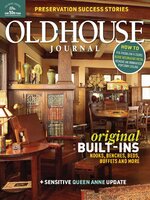 May/June 2023
May/June 2023
 March/April 2023
March/April 2023
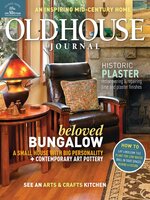 January/February 2023
January/February 2023
 New Old House 2023
New Old House 2023
 November/December 2022
November/December 2022
 Arts & Crafts Home 2023
Arts & Crafts Home 2023
 September/October 2022
September/October 2022
 Finding Home 2022
Finding Home 2022